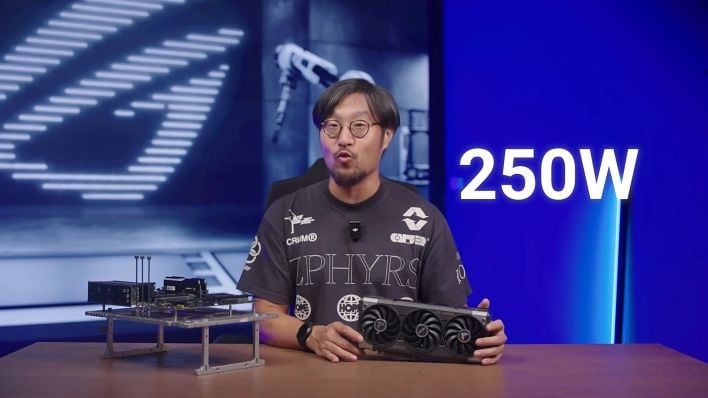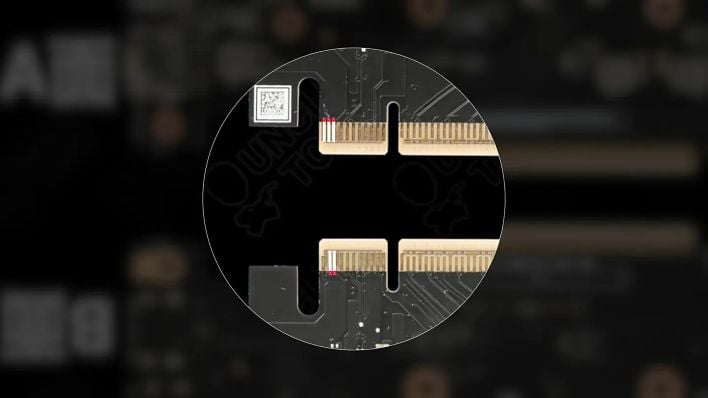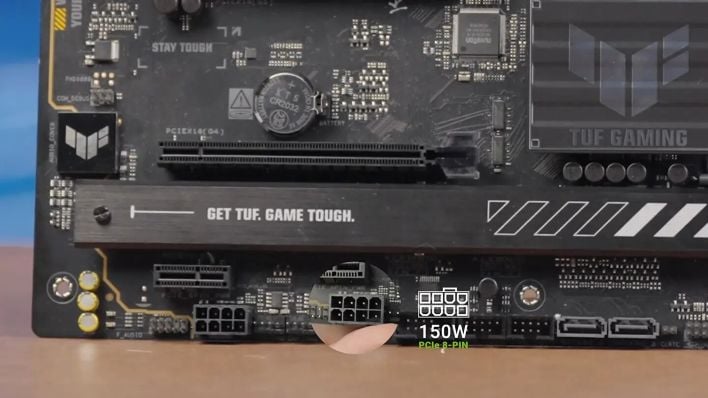Could an ASUS prototype PCIe connector spell the end of bulky,
unsightly power cables for graphics cards? We may soon find out—ASUS is showcasing a "magic modification" to the standard PCIe slot, allowing it to deliver a massive 250 watts of power directly from the motherboard (or more than triple the 75W provided in typical slots. No doubt this brings promises of streamlined PC builds, improved aesthetics, and maybe open up new possibilities for more compact, high-performance systems.
As GPUs have become more power-hungry, PSU-to-GPU power cables have become increasingly prominent, often adding bulk and clutter inside the case. Enter ASUS's latest concept that tackles this problem by fundamentally redesigning the power delivery pathway. The concept was presented by Tony Yu, General Manager of
ASUS China, via a video on Bilibili.
ASUS engineers focused on reinforcing the physical power path of the PCIe slot itself, which included widening and thickening the contact pads on the front side of the GPU's PCIe interface, fusing several 12-volt lanes into larger, lower-resistance conductors, and enlarging the corresponding copper area within the slot. To support the increased power output, the setup also integrated an 8-pin power connector directly onto the motherboard. This connector, traditionally located on the graphics card itself, now works in tandem with the reinforced PCIe slot to share the power load.
As it stands, this clever design appears to support low- to mid-range graphics cards, which currently occupy a sweet spot in the performance-per-watt curve (ASUS indicated that the 250W power limit is a perfect fit for GPUs in the 150-250W range, such as NVIDIA's
GeForce RTX 5060 Ti or AMD's
Radeon RX 9060 XT. If this concept ever hits the market, it'd be targeting a massive segment of the market, and a cable-free solution could be a significant selling point for gamers and creators who value clean aesthetics and easier assembly.
On the flip side, while the concept is promising, it requires a new ecosystem of compatible hardware. Both the motherboard and the graphics card must be designed to work with this
custom PCIe slot. However, ASUS asserts that the new slots will remain backward compatible with standard PCIe products.




